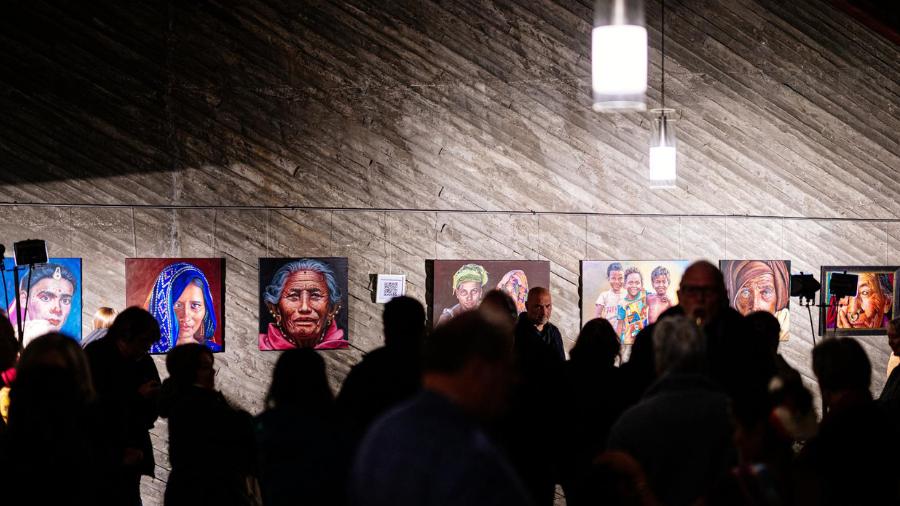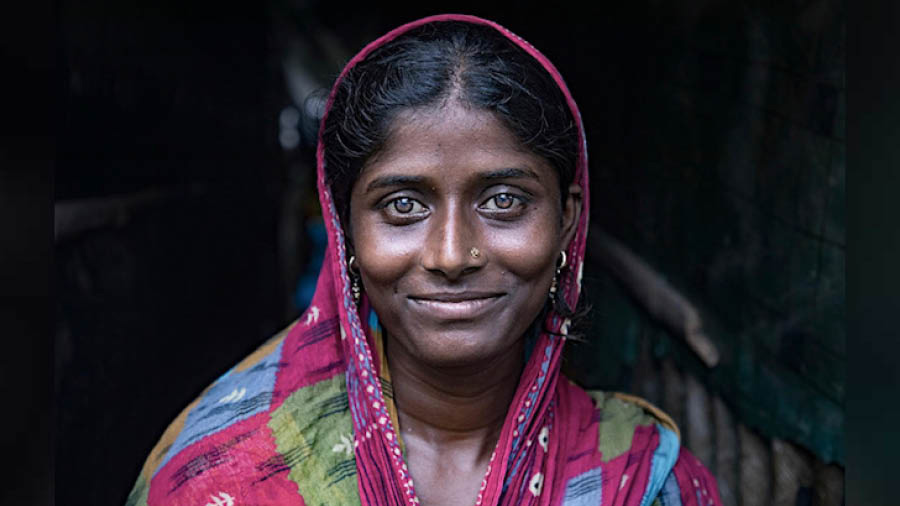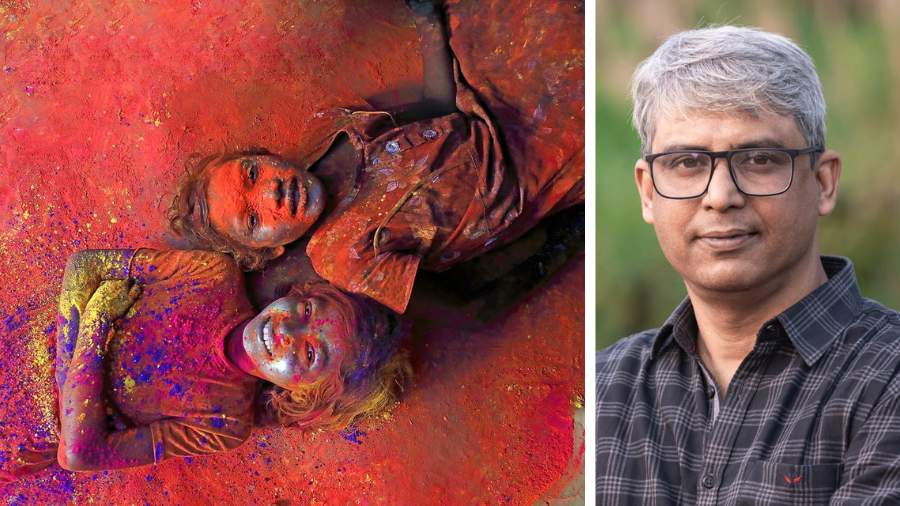A graphic designer by profession; a photographer by passion. Photography has inspired Anjan Ghosh to step out of his circle and build connections with people — from the tribal communities of Kheyadaha to the slum-dwellers of Topsia.
Two years ago, Ghosh visited Germany for an exhibition and ended up meeting visual artist Seona Sommer, who had created a painting using one of his photographs as reference. She explained her vision for an exhibition in collaboration with artists from India and Tanzania, which showcased people in their everyday surroundings. She wanted to make it a foundation for philanthropic efforts towards the upliftment of various communities.
On February 25 this year, that dream came into fruition. An International Art Exhibition titled Indien - Tansania - Deutschland (India - Tanzania - Germany) was inaugurated at Kulturkirche Ost at Cologne, with Anjan providing several powerful frames from semi-urban and rural settings in India.

Portraits showcasing the lives of the Mundas, a tribal community residing in Kheyadah Anjan Ghosh
“Seona’s charitable drive behind creating art was what drove me to participate in this exhibition that she put together single-handedly in Cologne. It is an honour for me to see her create paintings from my photographs,” Anjan said. He is the only Indian representative among the exhibition’s six artists. Besides photography, the exhibition also features paintings, drawings and even videos that connect cultures of India with Germany and Tanzania.

Anjan Ghosh’s photos being showcased at Kulturkirche Ost in Cologne, Germany Courtesy Anjan Ghosh
Anjan’s photographs of Indian society have taken him to exhibitions across Asia, Africa and Europe in the past few years, but the biggest motivator to participate in this collaboration was the humanitarian effort behind it. “I document a lot of social issues, especially in rural settings, and here we have a chance to raise funds for the communities we are representing, and connect them with rehabilitating organisations. A lot of the work done by my Tanzanian counterparts will benefit people who can’t even afford two square meals in a day, and this association is a great way to give back.” Anjan also emphasised on the cross-cultural impact, elucidating the participation of Indian Masala, a collective of Indian voices in Germany, which exposed locals to the magic of Indian classical dance forms like Bharatanatyam.
One of Anjan’s most humbling moments was the chance to give back to one of his subjects. “I had taken a picture of this woman in one of Topsia’s slums and I went back and gave a copy of the picture to her. She felt immense gratitude to be seen, something extremely rare within her community.” Five of his pictures were selected, showing multiple Indian themes like the family structures in the tribal communities, celebrations of Holi in rural India, and animal rearing.

Serina Bibi — a resident of Topsia’s Majdoor Para, a dense slum in the heart of Kolkata — felt glad to be seen through Anjan’s lens, remarking that visibility was hard to come by in her normal life Anjan Ghosh
Summing up his work, Anjan said it was all about capturing India in its truest, most authentic self. “The main essence of India comes from its rural areas. My intention is to search for this uniqueness and produce it on a global platform. Urbanisation is rapidly swallowing our daily life (in cities) and yet, Indian villages have continued to show a positive alternative. With this exhibition, even if we can change the life of one family in Bengal or India, we will be very grateful.”
The exhibition will conclude on March 19, and is open to all. You can find out more at ateliersommerkunst.de.


